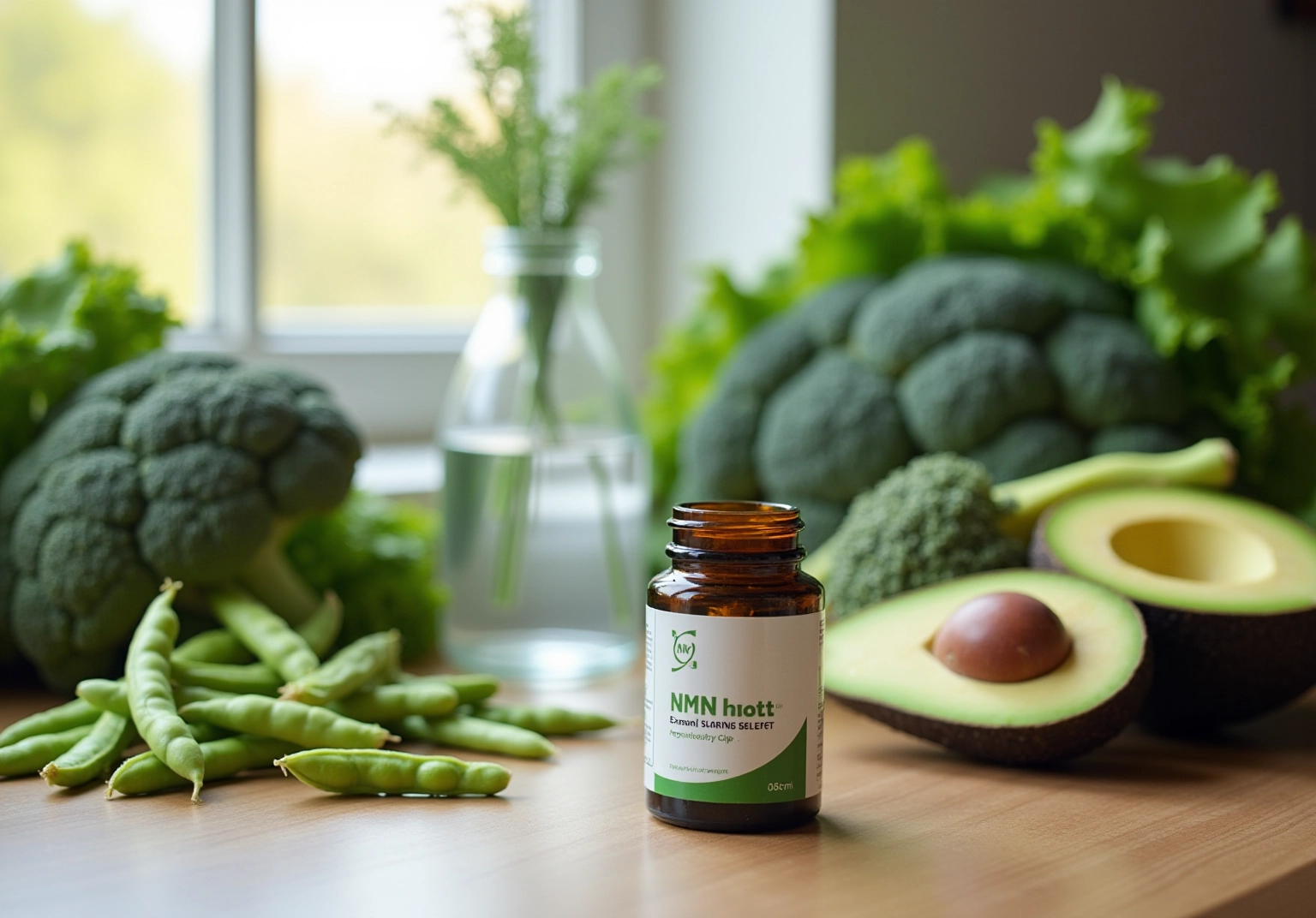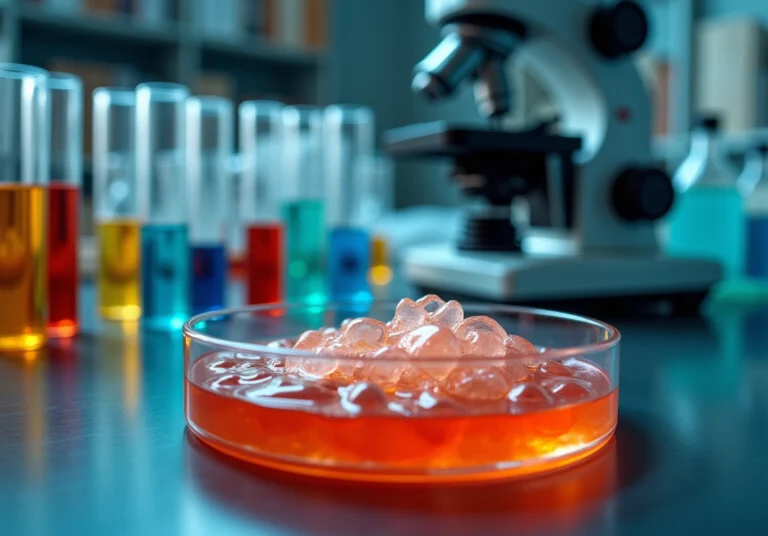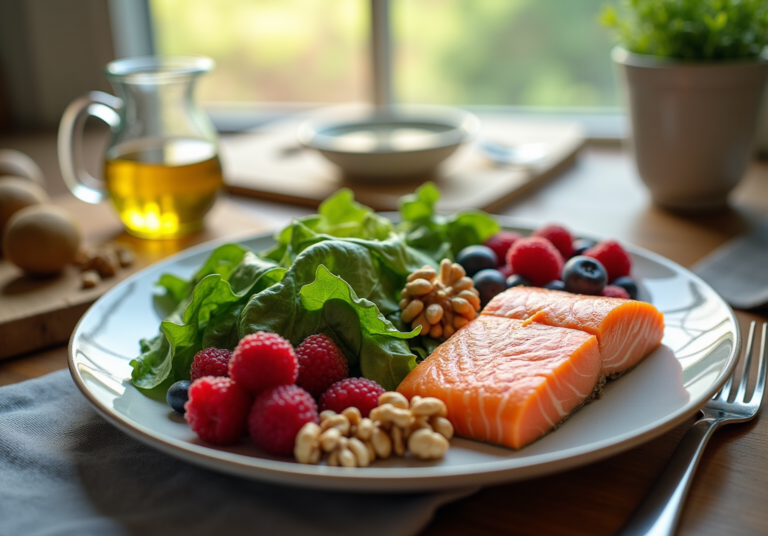Understanding the Difference Between NMN and NAD for Health
Overview
The primary distinction between NMN and NAD is found in their respective functions within cellular metabolism. NMN acts as a direct precursor to NAD, which is an essential coenzyme for energy production and various metabolic processes. This article elucidates the relationship between NMN and NAD, highlighting how NMN is absorbed and converted into NAD more efficiently within the body. As a result, this process enhances cellular functions and may contribute to healthier aging. Understanding this connection can encourage further exploration into the benefits of NMN supplementation.
Introduction
Understanding the intricate roles of NMN and NAD in cellular metabolism unveils a fascinating landscape of health and longevity. As essential molecules, NMN serves as a direct precursor to NAD, a coenzyme critical for energy production and various metabolic processes. This article delves into the significant differences between NMN and NAD, exploring their unique contributions to health, energy metabolism, and aging. Furthermore, with the promise of enhanced well-being through supplementation, one must consider:
- How can individuals effectively harness these molecules to combat age-related decline?
- How can individuals improve overall vitality?
Define NMN and NAD: Key Concepts in Cellular Metabolism
The difference between NMN and NAD lies in their pivotal roles as molecules in cellular metabolism. The difference between NMN and NAD lies in the fact that NMN is a nucleotide derived from ribose and nicotinamide, serving as a direct precursor to NAD. NAD, on the other hand, is a coenzyme found in all living cells, essential for energy production and various metabolic processes. It exists in two forms: NAD+ (oxidized) and NADH (reduced), playing a critical role in redox reactions that convert food into energy.
Understanding these definitions is crucial, as they support the biochemical pathways that affect aging and well-being. By understanding the difference between NMN and NAD, we can better appreciate their roles in maintaining our health and vitality. Furthermore, exploring how these molecules interact within our bodies can lead to insights on enhancing our metabolic functions and overall quality of life.

Examine the Biochemical Roles of NMN and NAD in the Body
Nicotinamide mononucleotide (NMN) serves as a pivotal precursor in the biosynthesis of nicotinamide adenine dinucleotide (NAD), a coenzyme essential for numerous cellular functions. NAD plays a critical role in energy metabolism, facilitating the conversion of nutrients into adenosine triphosphate (ATP), which acts as the primary energy currency of the cell. Did you know that NAD+ concentrations peak in early adulthood and begin to decline around age 25? Research indicates a decrease of up to 40-50% by the age of 50, a decline linked to various age-related diseases, including metabolic disorders and cognitive decline.
Furthermore, NAD is integral to DNA repair processes, activating enzymes such as sirtuins that regulate cellular longevity and health. The human body primarily supports NAD+ through the salvage synthesis pathway, which is crucial for maintaining its concentrations. Understanding the biochemical functions of NMN and NAD, as well as the difference between NMN and NAD, is vital for developing effective anti-aging strategies. By restoring NAD concentrations, we may enhance energy metabolism and support DNA repair processes, ultimately promoting healthier aging. Explore more about how these mechanisms can influence your well-being.
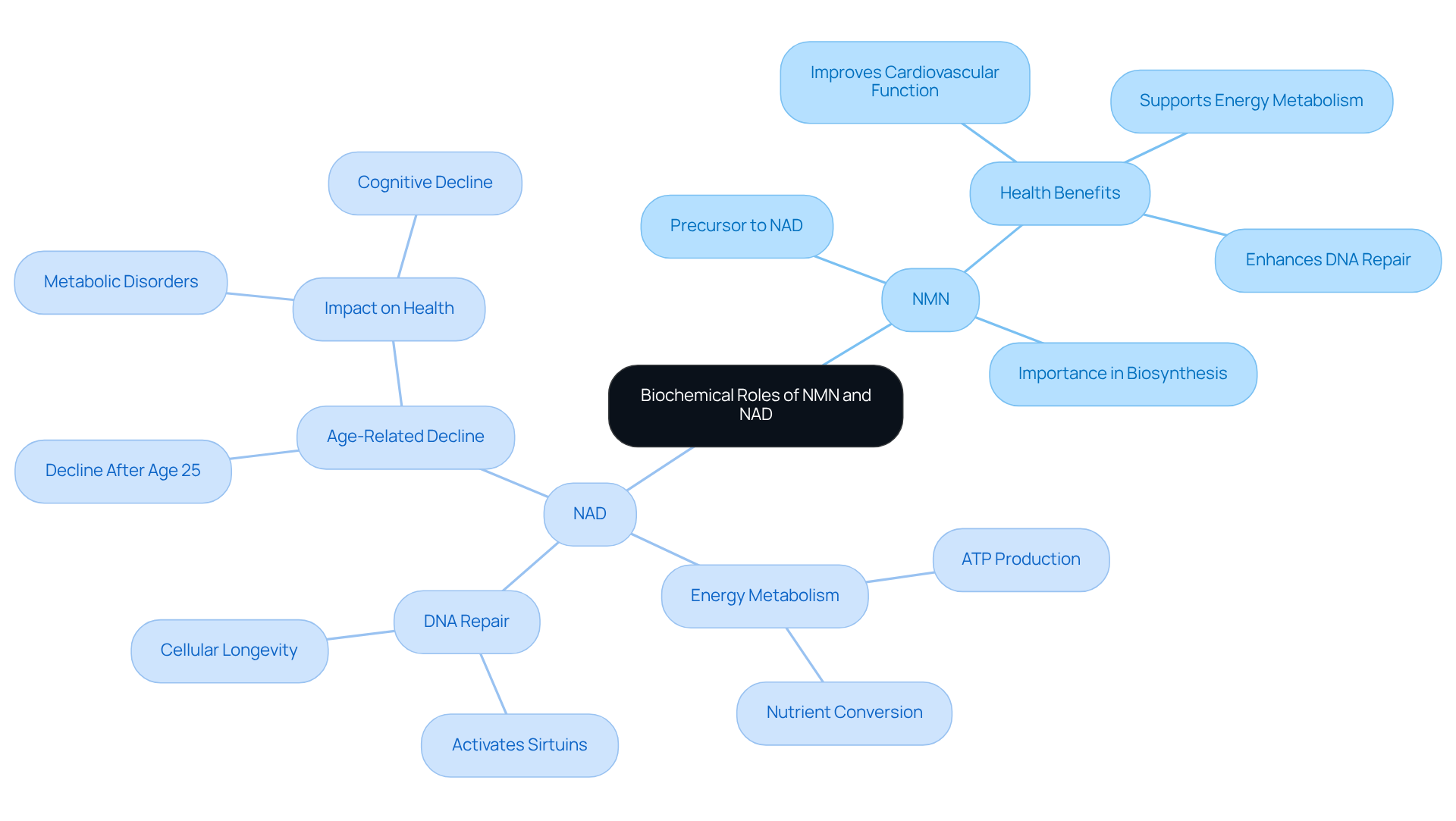
Compare Sources and Bioavailability: NMN vs. NAD
Nicotinamide Mononucleotide (NMN) is a compound naturally found in small quantities in foods like edamame, broccoli, and avocados. Notably, edamame contains approximately 0.47-1.88 mg of NMN per 100g serving.
Increasingly, NMN is available as a dietary supplement, which many prefer due to the difference between NMN and NAD, particularly in terms of superior bioavailability. The difference between NMN and NAD is that while NAD is a larger molecule that does not absorb well when taken orally, requiring conversion within the body, NMN is more efficient in this regard.
The difference between NMN and NAD lies in the fact that NMN is quickly absorbed and effectively transformed into NAD, making it a more effective choice for boosting cellular NAD levels. Research indicates that NMN supplementation can significantly enhance NAD+, with studies demonstrating a 38% increase in NAD+/NADH ratios over 60 days in middle-aged and older adults, as shown in clinical trials.
This swift absorption and transformation underscore NMN’s importance as a powerful supplement for those looking to enhance their NAD levels and promote overall wellness. However, it is crucial to consult medical professionals before starting NMN supplementation, especially for individuals with certain health conditions or those who are pregnant or nursing.
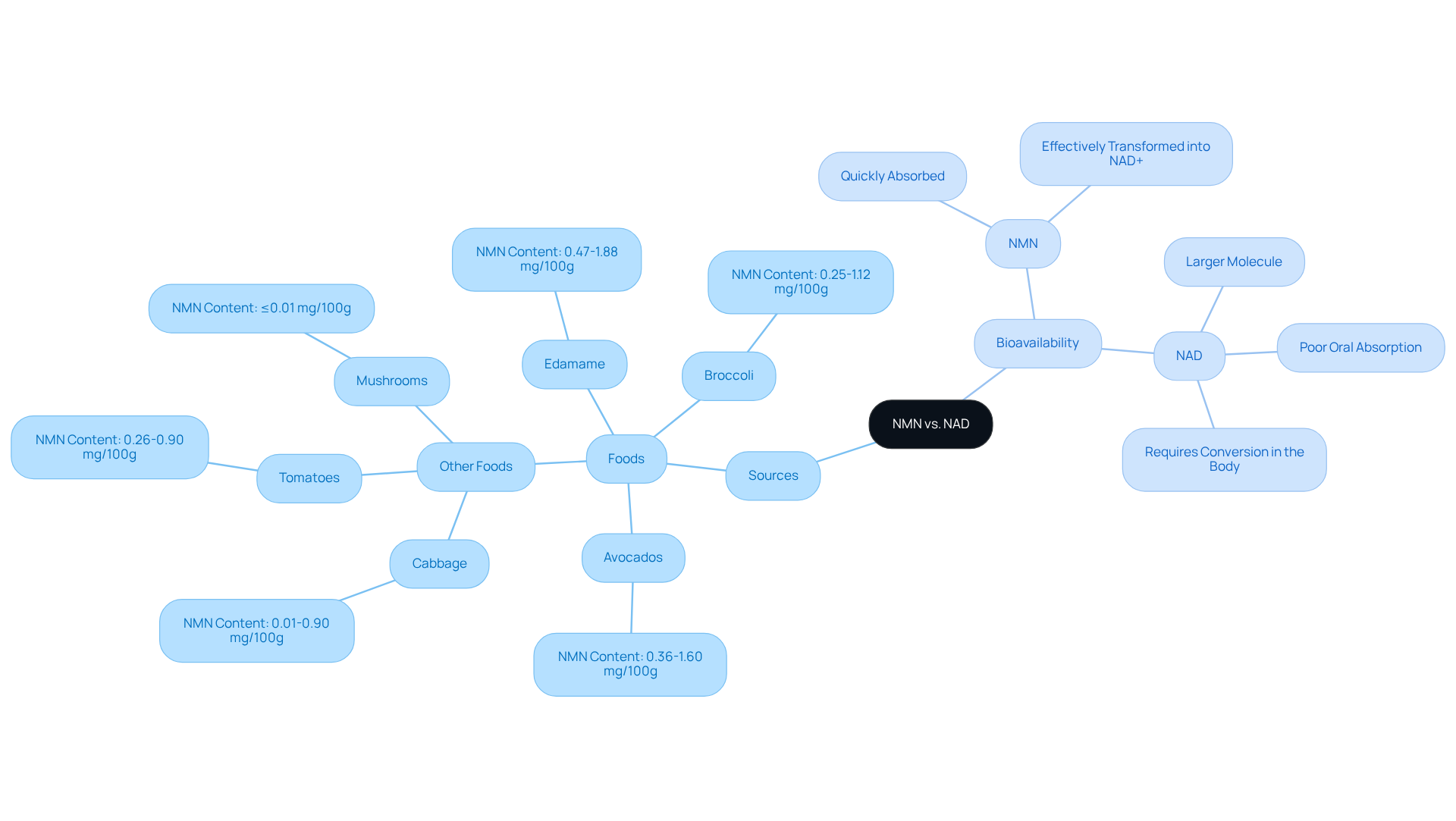
Explore Health Benefits of NMN and NAD Supplementation
Supplementation with NMN has been linked to various wellness benefits, particularly concerning aging. Studies indicate that NMN can significantly enhance energy metabolism, improve insulin sensitivity, and support cardiovascular function. In a clinical trial involving 80 middle-aged adults, NMN supplementation led to statistically significant increases in blood NAD concentrations, with the highest levels noted in those receiving 600 mg and 900 mg doses. Importantly, participants in these groups also exhibited improved physical endurance, as demonstrated by increased walking distances during a six-minute walking test, which were statistically significantly greater in the 300 mg, 600 mg, and 900 mg groups compared to the placebo at both days 30 and 60 (all < 0.01).
Furthermore, NMN has shown promise in combating age-related weight gain and enhancing muscle function. For example, the trial revealed that participants taking NMN maintained stable biological age markers, while the placebo group experienced a significant increase in biological age. This suggests NMN’s role in preserving physiological integrity as one ages. Although NAD supplementation is less common, it is associated with improved cognitive function and cellular repair processes, further underscoring its importance in wellness and longevity.
Together, NMN and NAD supplementation highlight the difference between NMN and NAD as promising strategies for enhancing well-being and vitality, especially as individuals navigate the aging process. The evidence supports their potential to alleviate age-related declines in metabolic health and promote overall well-being.
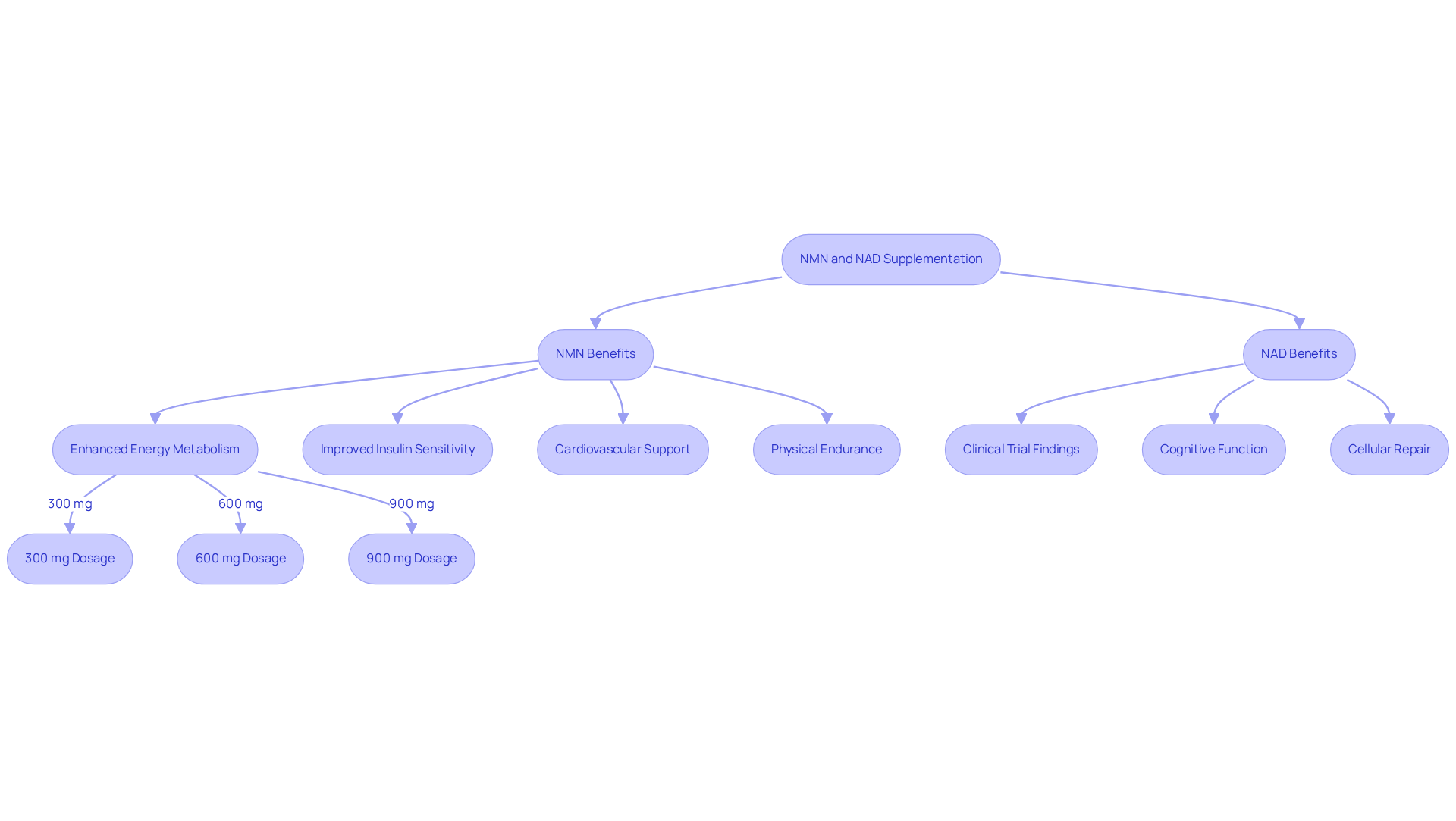
Conclusion
Understanding the distinction between NMN and NAD is essential for anyone interested in enhancing their health and well-being. NMN serves as a crucial precursor to NAD, a coenzyme vital for energy production and various metabolic functions. By recognizing their unique roles in cellular metabolism, individuals can better appreciate how these molecules contribute to overall vitality and the aging process.
The article highlights several key insights, including:
- The biochemical roles of NMN and NAD
- Their sources and bioavailability
- The health benefits associated with their supplementation
NMN is more readily absorbed and transformed into NAD, making it a more effective choice for those looking to boost their NAD levels. Research demonstrates that NMN supplementation can lead to significant improvements in energy metabolism, insulin sensitivity, and even muscle function, showcasing its potential in combating age-related declines.
In light of this information, exploring NMN and NAD supplementation could be a valuable step toward promoting longevity and enhancing metabolic health. As research continues to unveil their benefits, considering these supplements may offer a promising strategy for maintaining well-being and vitality as the body ages. Prioritizing informed decisions and consulting healthcare professionals can ensure a safe and effective approach to harnessing the power of NMN and NAD.
Frequently Asked Questions
What does NMN stand for and what is its role in cellular metabolism?
NMN stands for nicotinamide mononucleotide, and it is a nucleotide derived from ribose and nicotinamide. NMN serves as a direct precursor to NAD.
What is NAD and why is it important?
NAD, or nicotinamide adenine dinucleotide, is a coenzyme found in all living cells. It is essential for energy production and various metabolic processes, playing a critical role in redox reactions that convert food into energy.
What are the two forms of NAD?
The two forms of NAD are NAD+ (oxidized) and NADH (reduced).
Why is it important to understand the difference between NMN and NAD?
Understanding the difference between NMN and NAD is crucial as it supports the biochemical pathways that affect aging and well-being, helping us appreciate their roles in maintaining health and vitality.
How can exploring NMN and NAD enhance our quality of life?
By exploring how NMN and NAD interact within our bodies, we can gain insights into enhancing our metabolic functions and overall quality of life.
